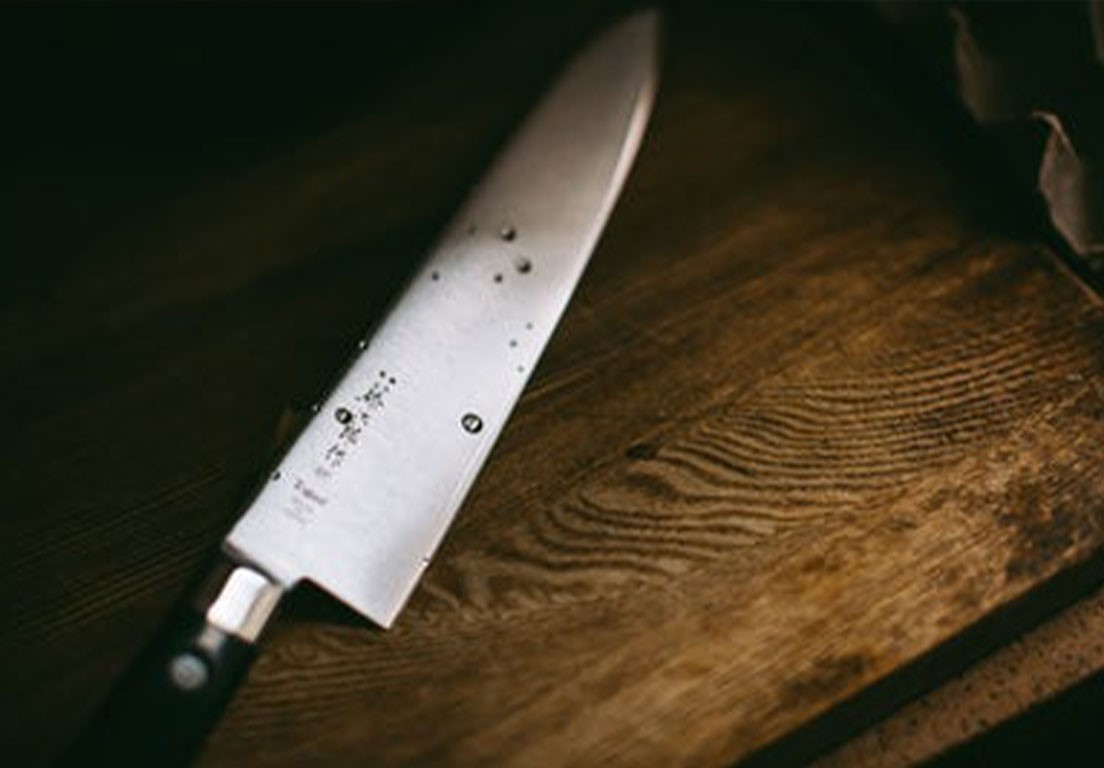The HSE highlight that accidents involving knives are common in the catering industry. They usually involve cuts to the non-knife hand and fingers but can lead to injuries on the upper arm and torso.
Unless controlled adequately, using a knife is a high-risk activity in kitchens. This was seen first-hand (or first-finger) on Saturday Kitchen with chef Donal Skehan slicing open his finger during what he aptly described as ‘live television with very sharp knives’. Similar dangers have also become apparent through the introduction of new medical term ‘avocado hand’ following a top British Surgeon revealing he treats up to four people a week for deep lacerations inflicted whilst attempting to cut an avocado. Dr Eccles thinks that avocados should carry warning stickers to minimise these incidents.
With most knife related incidents, it is rare that these types of injuries need much more than a plaster, worst case scenarios may involve the victim needing stitches and therefore it is unusual for these injuries to be RIDDOR reportable. This could present some confusion when we’ve stated that using a knife is a high-risk activity, yet they lead to minor injuries. It’s very important to remember that the minor injuries our team encounter are mostly incurred within a controlled situation. Without suitable control measures in the place, the results of a knife accident could be far worse.
As stated by the HSE, as an employer ‘you must ensure that your employees are kept safe from harm so far as is reasonably practicable.’ In order to do this, you must assess the risk of your employees being cut by knives and take reasonable precautions.
Following the first few steps we outlined in Shield Safety Group’s The importance of risk assessments, we’ve taken a look at a typical knife safety risk assessment.
Identify any hazards
Hazards of using knives may include:
- Cuts/abrasions
- Amputation of digits
- Accidental stabbing
Decide who could be harmed and how
The HSE highlight that accidents involving knives are common in the catering industry. They usually involve cuts to the non-knife hand and fingers but can lead to injuries on the upper arm and torso.
Example groups at risk include:
- Kitchen staff
- Bar employees
Evaluate the risks and consider controls
Practices that may result in the hazards include use, cleaning and/or carrying of knives or sharpening the blade.
Control measures for knife use can include:
- When not in use, knives should be placed at the side of the chopping board, in the block or on the magnetic storage system (if used). They should be placed flat and the blade must not be exposed upwards or outwards
- When carrying a knife across a busy area, it must always be held down and never extended outwards away from the body
- Never allow knives to project over the edge of a work surface or leave them where they may be covered by other objects
- Select the correct knife for the correct job and do not use blunt knives.
- Sharpen knives frequently so as to ensure they are not blunt
- Always hold the handle firmly, never allowing any part of the hand to touch the blade
- Keep handles of knives clean and dry, especially keeping the handle free from grease
- Never leave knives in a sink of water
- Do not leave sharp knives e.g. bread knives in guest areas where children may be able to pick them up
- Consider the location of knife use and whether the user may be knocked by other people or doors etc
- Cut fruit or vegetables in half to create a flat base for further chopping and slicing, do not attempt to cut items that may unexpectedly move unless they are secured with your other hand or another implement (such as a fork)
Additional control measures specific to your operating procedures should also be considered.
Next steps
Your next steps will be to then record the findings and implement them, check that reasonably practicable control measures are in place and review your risk assessment every year (or earlier, such as when an accident occurs or procedures change). Having an adequate risk assessment in place, with it fully implemented and followed, can reduce the risk of knife activity down to a medium.
For help managing your risk assessments contact us here or call us on 0161 967 1616
With Risk Assessment by DRI you can create and manage your assessments simply and efficiently. Our simple five-step process which includes, defining hazards and suitable control measures, managing reviews and area assignments, allows you to monitor your business’ entire risk status to ensure everyone is safe and healthy.
